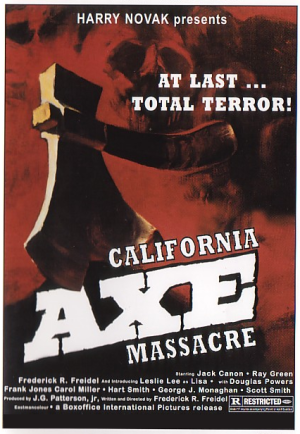
mostly accurate
Lisa, Lisa
aka Axe
aka The Virgin Slaughter
aka California Axe Massacre
Director: Frederick R. Friedel
Released: 1977 (filmed 1974)
Starring: Leslie Lee, Jack Canon, Frederick R. Friedel, Ray Green, Douglas Powers
Running time: 65 min
Genre: exploitation, horror, rape & revenge
Get me a glass of water, then drink it yourself, it’ll give you something to do. Dusk. A slim girl in the distance (It’s totally Lisa!) walks swiftly across a lawn and enters a creepy-looking, rural farmhouse with a big scary tree in front of it.
Later that evening, in the big bad city, three graduates (or possibly drop-outs) of the Tarantino Academy of Criminality are powerwalking through the lobby of an apartment building in their best business/crime suits. Feet. Feet. Feet. Chandelier. Chandelier. Chandelier. Elevator. One, two, three, four, ninth floor. Steele (Canon) and his large, dim-witted associate, Lomax (Green), looking so much like wannabe Jules and Vincents, step out of the elevator followed by their sloppy, Bob Ross-lookin’, ‘fro-master understudy, Nice Guy Billy (Friedel). Seems another associate of theirs, a gentleman named Aubrey, has messed up, crossed them in some way. Perhaps he missed a payment or slighted someone he shouldn’t have? (No1curr!) They break into Aubrey’s apartment and wait for him to return, Billy watching from the window as Lomax, who seems oddly fascinated and possibly aroused by all sorts of different fabrics, plays with one of Aubrey’s blouses. They catch him slippin’ and get the drop on him as he comes in with his lover Harold. Nice Guy Billy stays at the window, keeping a lookout for any happy little policemen as Lomax and Steele torture, humiliate and beat Aubrey. Harold covers his eyes and I think he cries a little. Not satisfied with the thorough thrashing he’s just handed out, Steele whips out his straight razor to Mr. Blonde Aubrey’s nose off, but Billy intervenes. Aubrey is already dead. With the window clear and seeing what happened to his man and expecting the same, Harold, not really being the stoic sort, saves himself the torture by jumping out the window to the pavement twelve nine floors below. With two deaths worth of heat on them now, the trio head out to the country to find a nice place to lay low, have some fresh fruit, and wait for all of this to blow over.
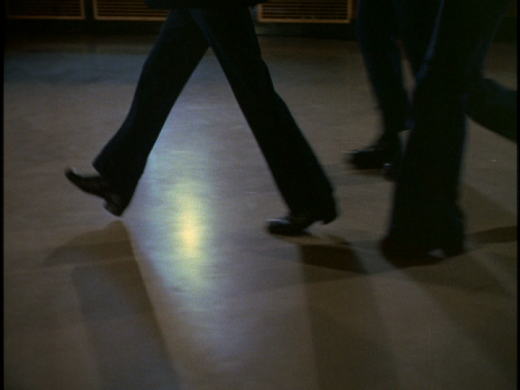
cue “little green bag”
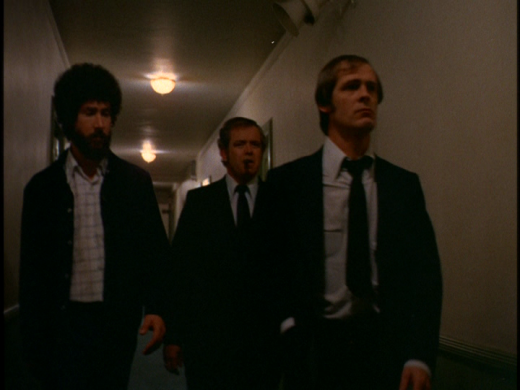
marvin, vincent, and jules
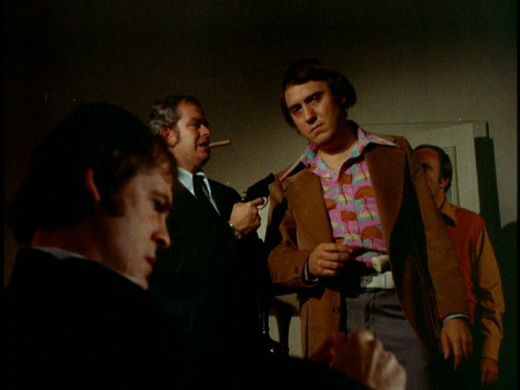
only the first unspeakable shirt
Back at the creepy farmhouse, a pretty, if sad and tired-looking young Lisa rolls her paralyzed granddad through the house and checks the fridge for breakfast fixings.
On the road, the Criminals Three stop off at a small, rural, roadside gas and grocery. Not having much of an appetite after an evening of murder and whining about not knowing there was going to be murder, Billy stays in the car and asks for just some nuts. There’s nuts alright. Steele, completely missing the point of going out to the country to lay low, flips shit when his fruit isn’t fresh enough and chucks it at the poor, timid cashier. She tries to avoid trouble by offering to give him some of the fruit. Sensing her fear and being a Grade A psychopath, he pounces. With help from Lomax, he terrorizes the poor checkout girl with the really ugly shirt. They toss some fruit and shoot the place up. Apple. Bang. Apple. Bang. Apple. Bang. Melon. Clumsy double entendre about melons. They force her to remove her unfathomably ugly blouse. Humiliation. Abuse. Catsup and cola bukkake. Billy gets his nuts (which he doesn’t even eat after all of that trouble) and they’re back on the road.
Lisa, meanwhile, is gathering up the day’s food. Eggs for breakfast. A freshly beheaded chicken bleeding all over the sink for later. She takes gramps up a raw egg for breakfast. Washes him. Prepares to shave him, but never quite gets around to it, due to the Reservoir Dunces pulling up outside. They snoop around a bit and force their way inside. A secluded farmhouse, defended only by one small girl and a quadriplegic old man makes for a perfect place to hide out for a few days. Not given much of a choice, Lisa accommodates them the best that she can, cooking for them, making up rooms. Nice Guy Billy, sickened by the brutality of his companions, wants to help their new hostages, keep them safe, but a late night fabric groping session cranks Lomax’ perv dial to eleven and he sneaks into Lisa’s room for a sickening sexual assault. There’s more to Lisa than they know, however, and she will only tolerate so much before she decides to take action … WITH AN AXE! Well no, actually with a straight razor. BUT THERE WILL BE AN AXE. Eventually.
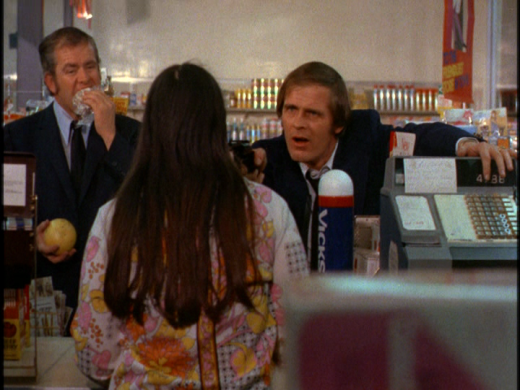
a little casual humiliation
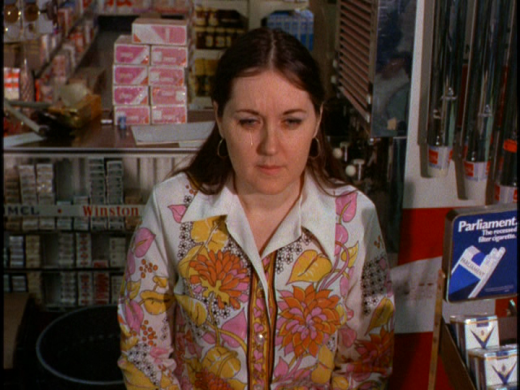
cashier wept
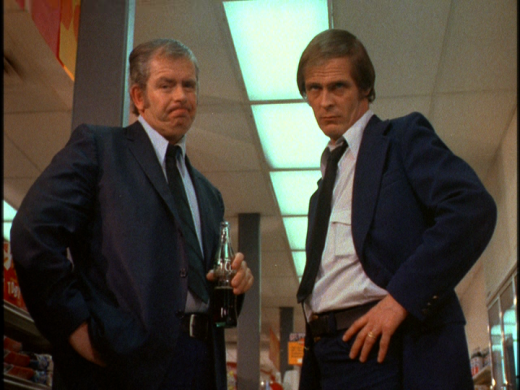
say “what” one more time
The sharp edge of suspense slams hard into fear. Written as well as directed (and starred in) by Friedel and distributed by trashy exploitation peddler Harry Novak, Lisa, Lisa is a short (barely feature length), and decidedly un-exploitative exploitation film, with advertising far more lurid than the actual movie. Filmed in just eleven days on a shoestring budget, supposedly without the option of retakes, it overcomes its limitations to be an interesting and somber little flick that hints at more than it shows, but somehow still found itself lumped in with the real Video Nasties on the British Board of Film Censorship’s list of banned movies.
Fisty: I must confess: I have a particular fondness for little regional exploitation or horror flicks like this. And that makes me pretty un-objective, but then again, all of these reviews are pretty fucking subjective anyway. But yeah, this went way better than expected. I was actually a bit disinterested in it based on the title and it being a Video Nasty. Yawn, I though, another one. But the reality of Lisa, Lisa was entirely unexpected.
Bill: It really isn’t what you expect it to be. It has one of those awesome trailers that make you think you’re about to see the most violent and perverse movie ever filmed, but that’s really all misleading hype. I don’t think it was ever meant to be the sleazy slaughterfest they sold it as. It’s more reserved than you’d think it would be, based on re-titles like California Axe Massacre as well as its Video Nasty status. There’s really no extended, uncomfortable assault scenes, like in Night Train Murders or Last House on the Left.
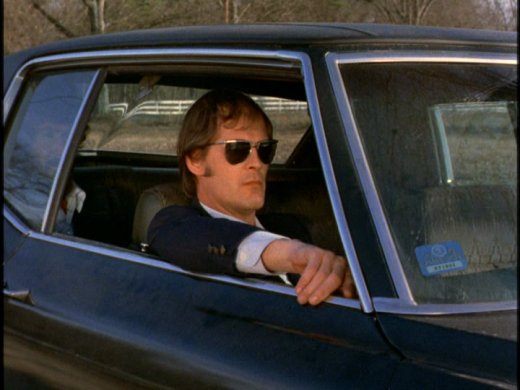
medium cool
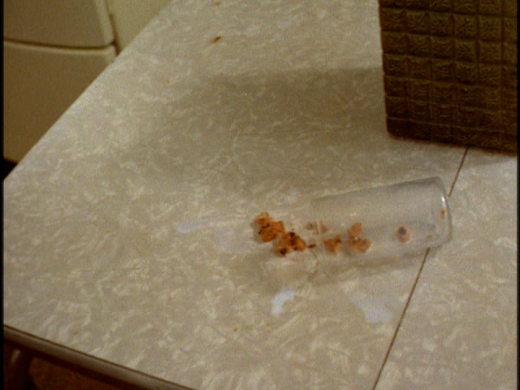
things can only get worse from here
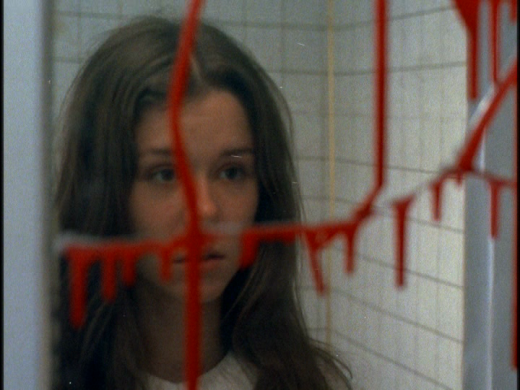
premonition, memory, fantasy?
Fisty: Yet more evidence for the Video Nasty craze being so much hype! That isn’t to say, however, that there isn’t some genuinely weird and perverse stuff going on here. It’s just that much of it is–dare I say it?–understated.
Bill: … or we’re just jaded and desensitized. They do show the sawing of razor on flesh after a simulated rape, or at least attempted rape. It doesn’t look to me like Lomax was all that successful. I’m not sure if you were meant to believe he was and it actually happened or if it only almost happened. Regardless, there was that razor/flesh moment. The grocery store scene was pretty rough. I mean, they didn’t make her pee her pants, stab her to death, or play with her guts, but they did still terrorize and humiliate the girl. And the murder of Aubrey was pretty violent, with lit cigars stuffed in dude’s mouth and all, and his nose almost coming off. I’ve been thinking about it and I’m wondering if maybe the movie has a sharper edge than it initially seemed to me. It may not be I Spit on Your Grave or Maniac, but maybe it is a little rougher than I was initially giving it credit for. Maybe it’s only understated when compared to other movies of the type? I mean, there was definitely more blood in this than you ever see in The Texas Chainsaw Massacre.
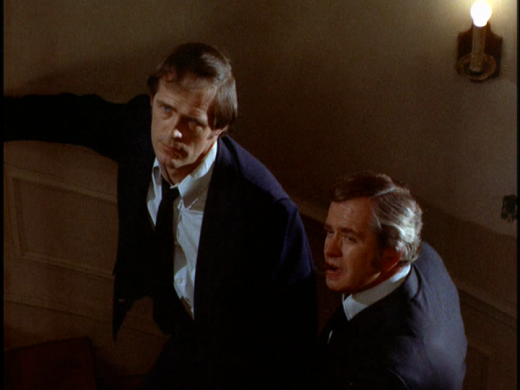
the big bads
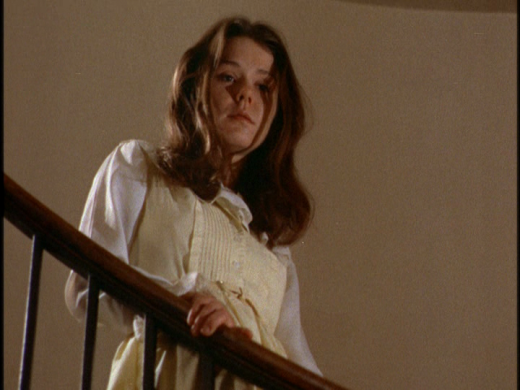
the many faces of lisa
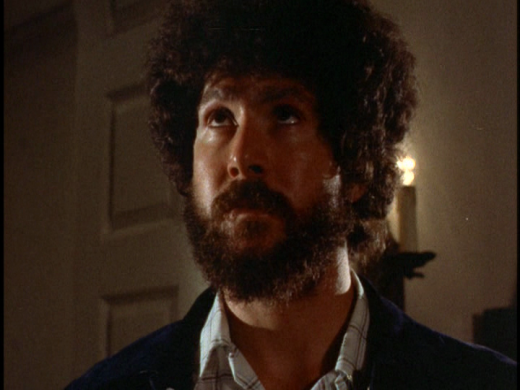
see any happy little trees up there?
Fisty: Slow down there, turbo! I never said it WASN’T rough. I was genuinely on edge during a lot of the movie, because it was so understated in many ways, yet the vicious perversity of the opening scene informs us right off the bat that these dudes are capable of anything. During the market scene I was convinced that there was no way the poor clerk was getting out alive, and that all the indignities heaped upon her were merely a precursor to an ignominious death. (Is that a spoiler? Is Bill going to yell at me now?) And once the Original Tripso Trio arrived at The Farm (Tangent: I’m going to go ahead and proper just about all the nouns in this here joint because Lisa, Lisa is some metaphorical-allegorical shit, yo.), I removed myself from the couch to my tenter and settled in on the hooks because SOMETHING WAS SURE TO HAPPEN.
And eventually, it did. But first I had to wait –on tenterhooks!–while Lisa drifted about in her ivory dress, tending chickens, collecting eggs, killing them, preparing meals, shaving her grandfather, staring at eggs, watching chicken blood drip (still more exciting that watching paint dry!), and so on. Do not get me wrong–all of this builds tension (and confusion) admirably. And it also serves to make us all a little uneasy. Who is Lisa, really? And her grandfather? Where are her parents? What happened to Gramps? Is he afraid of her? What happened to Lisa? Did anything happen to her, or is she just … that way? None of those questions are ever answered, but Friedel gives us just enough–a mere taste, really–to speculate.

fore-something or other
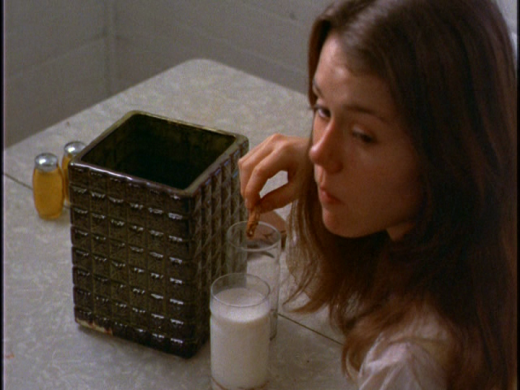
small pleasures

only the lonely
Bill: Okay. That’s good. I was just worried that we were underselling the brutality of the movie and making it sound like a particularly boring Lifetime drama. Also, stop spoiling things.
I love that so much is left unexplained. I feel like most movies, especially modern movies, have a tendency to over-explain things, spoon-feeding you a bunch of unnecessary background info. What did Aubrey do to deserve his beating? Where are Lisa’s parents? Where did that clerk get such an ugly blouse? What is the ideal tomato soup/blood ratio to keep someone from realizing they’re eating blood? Who cares? This is the story of Lisa and the Three Thugs and you get only what you need to understand what happens when they meet. All the other details are left to you to ponder and that vagueness and ambiguity is good. They keep you thinking and wondering long after you’ve finished watching.
I’ve gone back and forth wondering if gramps was trying stuff with Lisa and that’s how he ended up in that chair to begin with. She does tend to go for the neck (at least she did with Lomax and the chicken) and that would support the idea of her injuring him in a way that could cause his paralysis. And this would also provide some insight into why Lisa seems so emotionally stunted. But it also could’ve been a disease or accident that left him like he is and Lisa might just be … that way. Concerning the scene in which grandpa sees Lisa in action and gets a faceful of blood spatter: I saw him shaking and thought that meant he was terrified, terrified of Lisa and what she was capable of, but you had a different interpretation, that that was an excited glee in gramps. This was maybe the most excitement he’s seen since he’s been in that chair and he’s loving the carnage. It’s just like the war! The great thing about Lisa, Lisa is that both views are valid. It could be either and you can easily make a case for both.
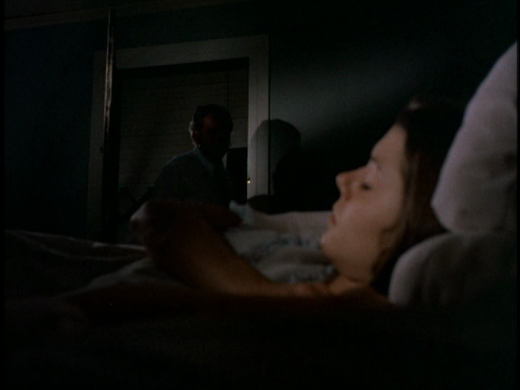
look…
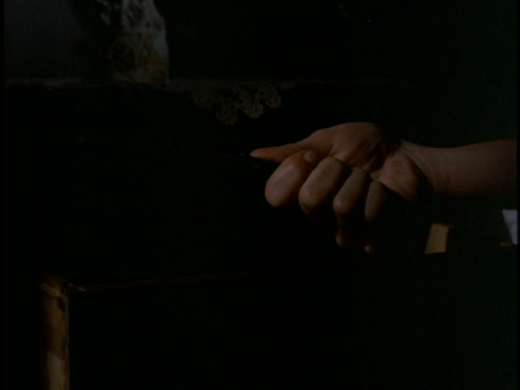
i’m just not okay
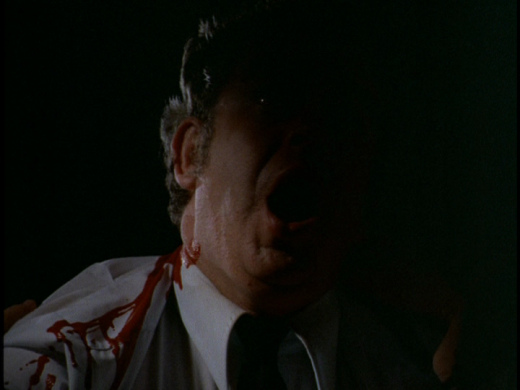
being flippant right now
But I really do think he was scared. Lisa is just a scary person. She doesn’t seem to realize that people aren’t eggs. She breaks an egg … oh well! She kicks some dirt over it to cover up her accident and goes on her way. She kills a man … oh well! She hacks him up and sticks his pieces in a trunk to hide her crime. No difference. Actually, even adding the “oh well” is wrong, because she never has so much as an “oops” look on her face. No matter what she is doing, being attacked, struggling, cooking dinner, eating a cookie or killing someone, her expression never changes. She’s empty. Michael Myers emotes more than this girl. And it’s more than just the way she deals with the crimes with no emotion, it’s also how she cares for her grandpa. She doesn’t seem to recognize him as a human being either. She never speaks a single word to the man. She never reassures him or defends him or tells him what she’s about to do or why. There’s no, “Good morning, grandpa,” or, “I’m going to go get started on breakfast now.” He is completely helpless as scary strangers are loose in his house and she never even acknowledges that this could be traumatic for him. He’s not a person she cares for, he’s just a list of things she needs to do each day. The only time you get a hint at any kind of inner feelings is in a brief moment where she contemplates suicide and you see how lonely she might be feeling. But even then, her face is blank. Ending herself would just be another chore. It’s sad, sure, but even more so, it’s chilling
Fisty: Even when she’s disposing of the first body, it seems to be a vague sort of nod to the etiquette of dealing with houseguests (Never leave a corpse where a guest will find it!) rather than an impulse born of of fear. I’m not sure whether I’d consider self-preservation to even be one of her motives in disposing of the first corpse, as her suicidal gestures and cavalier chicken & egg consumption seem to indicate someone with a decidedly laissez-faire attitude toward life and its preservation.
Whatever the reason is for Lisa’s (apparent) impassivity and quiescence, we’ll never know it. That she waits until Lomax’s rape attempt to strike may hint at a history of sexual abuse. Perhaps it was Gramps, and that is the reason she cares for him with her casual cruelty. Perhaps it was before that, with one of her missing parents–could that be why they’re AWOL? It may have not been familial at all, but a My Sweet Audrina moment under a golden raintree. Or perhaps she’s simply schizophrenic, or even brain damaged somehow, whether via birth defect or neglect. Maybe it’s solipsism syndrome, which would explain how Lisa treats everyone else in the film as though they were things without meaning. I CAN DO THIS ALL NIGHT, FOLKS! Maddening as it is, we can only speculate.
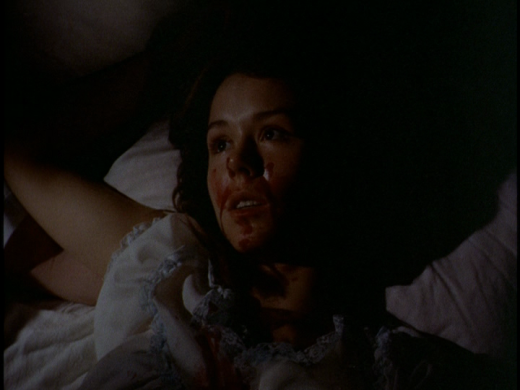
aftermath
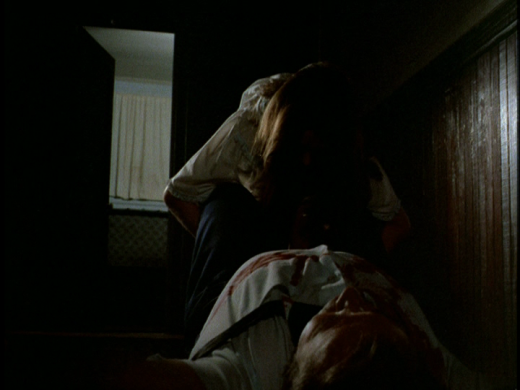
lomax could be a real drag
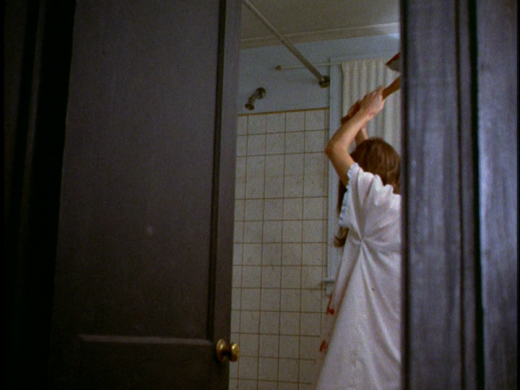
here’s lisa
However, Lisa only APPEARS to be entirely passive until the attempted rape. Though her protests at the presence of the Not-Quite-Ready-for-Tarantino Gang appear to have no force behind them, and though she meekly acquiesces to their home invasion, the lady doth in fact protest. She subsides again into her apparent apathy, perhaps feeling like it’s best to ride the storm out and have them on their way–but not before contemplating suicide as an out, that is how much she dislikes or fears their presence. But it is at that moment there before us in the mirror that she suffers an existential crisis, undergoing a seachange into something rich and strange–and not a little violent. Blink, and you might miss it, but the violation of her person by Lomax is a moment Lisa prepares for, and her actions then are not at all impulsive. It is the invasion, not the attack, that is the wellspring for all her further actions. Or… I’m full of shit and she was always that solipsistic monster.
Bill: I’m not sure her suicide contemplation was really as transformative a moment as you think it was. I think she probably has the same moment in the mirror everyday. She has nothing to live for. She feels no love, has no wants, no desire for or prospects at romance, no goals. If gramps is just a chore, she is just a chore-doing machine. She has nothing that gives her any kind of joy, except maybe, MAYBE, she gets a little from her cookies, if she is even capable of feeling joy. She does seem lonely and, I guess, trapped in her non-life, but when Bob Ross showed interest in her, I never got the sense that she ever even considered him as a way out. But she did seem to let him think he might be her savior, maybe just to protect herself or–I think more likely–as a way of biding time and waiting for her moment. Maybe Lomax’s attack triggered her violent turn, but she was a bit empty even before that. I think she probably already was that “solipsistic monster” and Lomax’s rape play just forced her to move up the timetable on what was possibly already something she was considering. I’m not so sure these are her first victims. I have no concrete reason for thinking it, but I think she has killed other people that came to the house before. Maybe just some dumb kids traveling the country or, more likely, a traveling salesman or drifter farmhand that sought to take advantage of her situation.
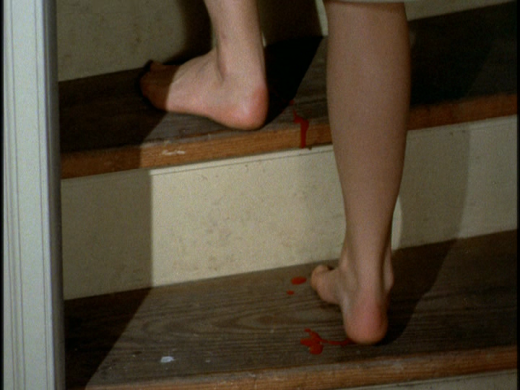
who would have thought the old man to have had so much blood in him
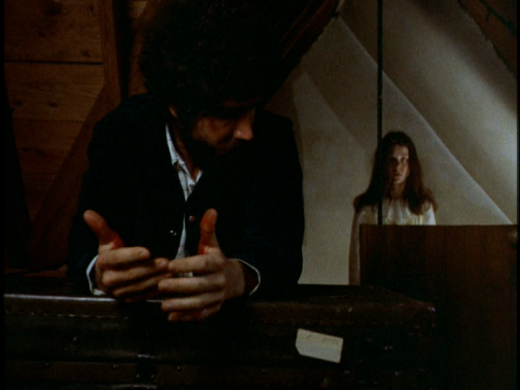
this my hand will rather the multitudinous seas incarnadine
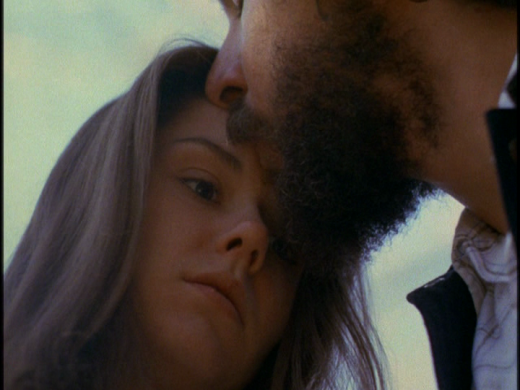
axe-ing for it
And I’m sure that I’d know all of this for sure if I could only figure out what all the broken eggs mean. They have to mean something! There has to be some symbolism to the fucking eggs! It’s maddening. I can’t stop thinking about the eggs and what they could mean. There’s some secret code that I’m just not figuring out. Lisa is actually easier to find some message in. Lisa could represent, especially through her murder of the guys and how it equates with her casual killing of the chicken, rural folks’ more realistic views of life and nature. City people don’t kill their own chickens. They don’t deal with death daily. So we city peeps can see the country people as being harsh or unfeeling, like Lisa. And that freaks us out. But those damn eggs…
Fisty: I’m convinced the eggs and chickens are just symbolic of how indifferent Lisa is to all other people, or the world, really. They’re irrelevant to her, just things as carelessly dropped or killed and eaten as cared for. Which maybe tells us all we need to know about her background and upbringing.
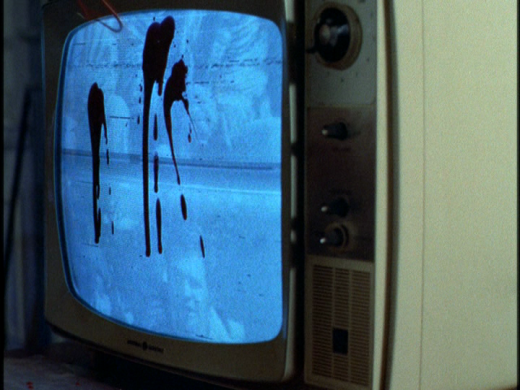
out, damn spot
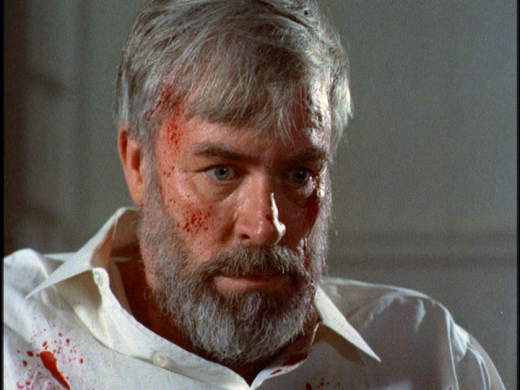
hell is murky . and also lisa.
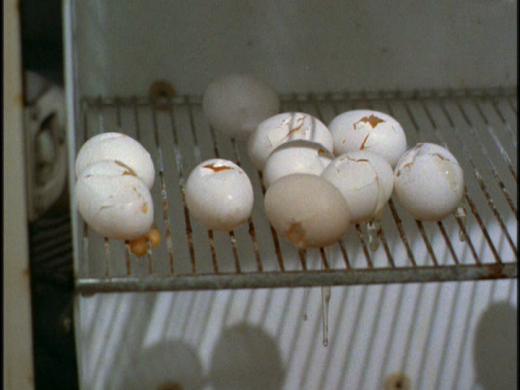
RIFE WITH MEANING
What you mentioned about the gang’s perception of Lisa (and ours as well) as city dwellers looking askance at country folk plays into my Big Theory about the film, namely that it’s a riff on “The Town Mouse and the Country Mouse.” You remember that one, right? The fable where the city mouse visits the country mouse and scoffs at his simple pleasure, then the country mouse visits the city mouse where they dine like kings but end up chased off by some dogs? That’s Lisa, Lisa! But like, there’s murder instead! The big, bad city gents come rolling into the bleak countryside looking for a cozy little mousehole, and maybe a little humiliation of the weak to boot. While they think the country is a gentle, quiet place populated by rube and bumpkins, to be used and abused as they please, they find instead that it is a place far more savage than they can handle. They are not, however, the bumbling but civilized middle class victims of films like The Hills Have Eyes or Texas Chainsaw Massacre. Steele’s gang are thugs, violent and murderous, but they’re also fish out of water in the country, and when in Lisa’s milieu, they find that her mute and dispassionate brutality easily triumphs over their machinations; they’re as fragile as the eggs she casually and ruthlessly crushes. Aesop concludes his fable with the moral that it is better to live in peace than in continual fear, and Steele’s gang undoubtedly wish they’d never fled the city they understand for the inexplicable terrors of the empty countryside.
In most horror hixploitation films the rural inhabitants are depicted as grim or manic bogeymen, inbred or even mutated, and with all manner of undesirable behaviors and perverse desires. Lisa, Lisa is then a contradiction, for Lisa and her grandfather are eerily silent and seemingly placid. Here it is the city dwellers who swagger and boast; when they transgress they do it knowingly, purposefully. In punishing them for their misdeeds, Lisa recalls John and Estelle Collingwood in Wes Craven’s Last House on the Left. It’s impossible to not draw parallels, for both films feature criminals on the run taking refuge in the country and a sexually assaulted young girl, with revenge taken for the crime. Obviously, Lisa survives the (attempted?) rape and exacts her own revenge, and neither does her revenge feature the same torment as that of the Collingwoods’ descent into savagery, but like LHotL, Lisa, Lisa too is a deeply sad film.
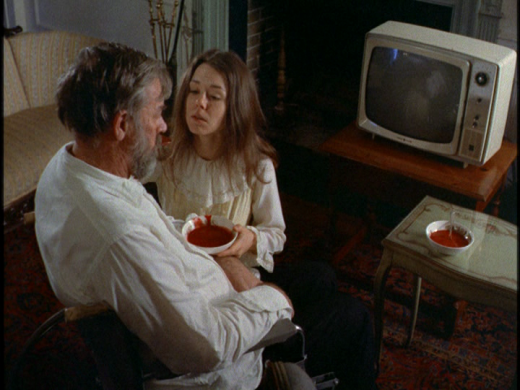
meat’s meat, and a man’s gotta eat
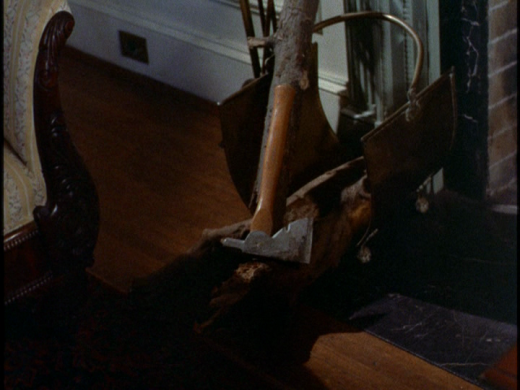
axe
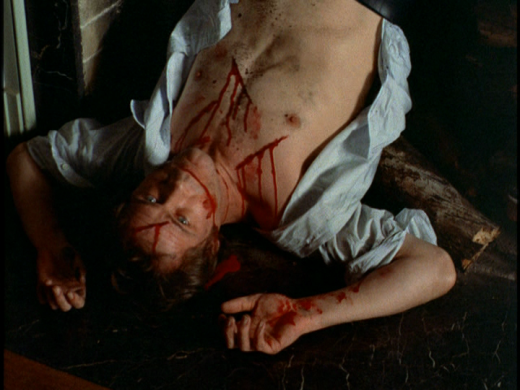
ME TIE DOUGHTY WALKER
Stay away from Lisa! In Lisa, Lisa we have perhaps one of the finest examples of what a bizarre and convoluted mess the whole Video Nasties uproar really was, as well as a stellar example of a once thriving regional movie scene. While brutally violent and often deeply uncomfortable, Lisa, Lisa is hardly the immoral or obscene bogey of the Video Nasties craze. Lisa herself is amoral as an animal, and both she and Friedel come down hard on the depravities of the gang…with Lisa’s own depravities. Yet for all the violence and startling grotesquerie, Lisa, Lisa is an often quiet, suspenseful (dig that jarring, atonal score!), even thoughtful meditation on mental illness and family, in the form of a horror/exploitation film. A wonderful remnant of a cheap, fly by night & the seat of the pants era of regional filmmaking, don’t miss this slice of Americana.
Note: A recent interview of Frederick R. Friedel by Shock Til You Drop dropped a bomb about a remake of Lisa, Lisa being in the works, perhaps within the next year! Let’s hope whomever helms this one doesn’t take the Zombie approach of cramming in exposition…




































































